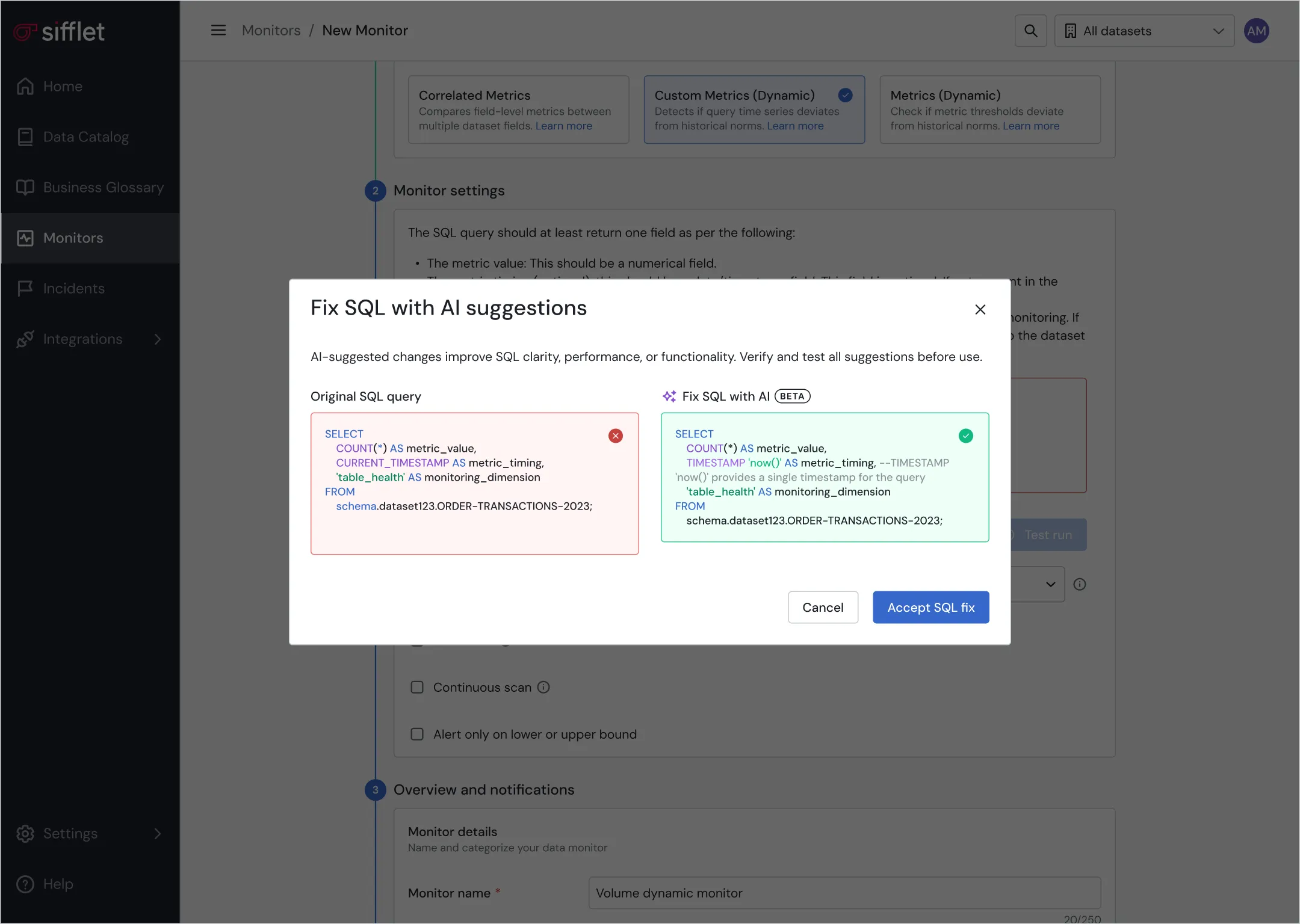Data governance
Proactive access, quality and control
Empower data teams to detect and address issues proactively by providing them with tools to ensure data availability, usability, integrity, and security.

De-risked data discovery
- Ensure proactive data quality thanks to a large library of OOTB monitors and a built-in notification system
- Gain visibility over assets’ documentation and health status on the Data Catalog for safe data discovery
- Establish the official source of truth for key business concepts using the Business Glossary
- Leverage custom tagging to classify assets

Structured data observability platform
- Tailor data visibility for teams by grouping assets in domains that align with the company’s structure
- Define data ownership to improve accountability and smooth collaboration across teams

Secured data management
Safeguard PII data securely through ML-based PII detection















Frequently asked questions
What are Sentinel, Sage, and Forge, and how do they enhance data observability?
Sentinel, Sage, and Forge are Sifflet’s new AI agents designed to supercharge your data observability efforts. Sentinel proactively recommends monitoring strategies, Sage accelerates root cause analysis by remembering system history, and Forge guides your team with actionable fixes. Together, they help teams reduce alert fatigue and improve data reliability at scale.
Can data lineage help with regulatory compliance like GDPR?
Absolutely. Governance lineage, a key type of data lineage, tracks ownership, access controls, and data classifications. This makes it easier to demonstrate compliance with regulations like GDPR and SOX by showing how sensitive data is handled across your stack. It's a critical component of any data governance strategy and helps reduce audit preparation time.
What’s the main difference between ETL and ELT?
Great question! While both ETL (Extract, Transform, Load) and ELT (Extract, Load, Transform) are data integration methods, the key difference lies in the order of operations. ETL transforms data before loading it into a data warehouse, whereas ELT loads raw data first and transforms it inside the warehouse. ELT has become more popular with the rise of cloud data warehouses like Snowflake and BigQuery, which offer scalable storage and computing power. If you're working with large volumes of data, ELT might be the better fit for your data pipeline monitoring strategy.
Can reverse ETL help with data quality monitoring?
Absolutely. By integrating reverse ETL with a strong observability platform like Sifflet, you can implement data quality monitoring throughout the pipeline. This includes real-time alerts for sync issues, data freshness checks, and anomaly detection to ensure your operational data remains trustworthy and accurate.
What tools can help me monitor data consistency between old and new environments?
You can use data profiling and anomaly detection tools to compare datasets before and after migration. These features are often built into modern data observability platforms and help you validate that nothing critical was lost or changed during the move.
How does Flow Stopper support root cause analysis and incident prevention?
Flow Stopper enables early anomaly detection and integrates with your orchestrator to halt execution when issues are found. This makes it easier to perform root cause analysis before problems escalate and helps prevent incidents that could affect business-critical dashboards or KPIs.
Can Sifflet integrate with my existing data stack for seamless data pipeline monitoring?
Absolutely! One of Sifflet’s strengths is its seamless integration across your existing data stack. Whether you're working with tools like Airflow, Snowflake, or Kafka, Sifflet helps you monitor your data pipelines without needing to overhaul your infrastructure.
Who benefits from implementing a data observability platform like Sifflet?
Honestly, anyone who relies on data to make decisions—so pretty much everyone. Data engineers, BI teams, data scientists, RevOps, finance, and even executives all benefit. With Sifflet, teams get proactive alerts, root cause analysis, and cross-functional visibility. That means fewer surprises, faster resolutions, and more trust in the data that powers your business.













-p-500.png)
